

With the ROG GeForce GTX 1070 Ti Strix Gaming, Asus puts an interpretation of the GP104, which has been slimmed down into the GTX 1070 Ti, on the customer shelf, which actually does almost everything right and nothing wrong. Of course, this is also reflected in the price, but we can... The rather tidy-looking board does not hide any secrets. Power supply, input range, GPU and memory are located exactly where you would have expected them at first glance. THE GPU power supply is a... Important preliminary remark
We had already mentioned it at the beginning that almost exclusively the resulting boost clock rates of each GTX 1070 Ti determine the final performance and thus the so-called GPU lottery and not the manufacturer and model.... Power consumption at different loads
At 177.3 watts, the power consumption in the Torture Loop is even just below the point that Nvidia has set as the Power Target with 180 watts. In the gaming loop, the power consumption of 177.2 watts is almost... Overclocking
The limits of this card are those of the competitor with similar Power Target, which is of course also due to the already mentioned GPU quality. With an adjustable Power Target of 216 watts, the card was approved for... Cooling system and backplate
Of course, the generated waste heat is directly related to the recorded power, for which the cooling solution is responsible for optimum dissipation. This rather conservative cooling system relies on a large lamel... Summary
Well, it's always kind of better, but in this case (almost) everything is right. And this is a good one for anyone who loves a GeForce GTX 1070 Ti. Not too heavy, really quiet and mostly also order...
Power consumption at different loads
At 177.3 watts, the power consumption in the Torture Loop is even just below the point that Nvidia has set as the Power Target with 180 watts. In the gaming loop, the power consumption of 177.2 watts is almost at the decimal point exactly at the Torture value. When the maximum possible power target of 216 watts was exhausted, the card with just under 212 watts and 2075 MHz (average value from Witcher 3 Ultra-HD, warmed up) remained in an area that still seems quite acceptable. The rest is going as usual.
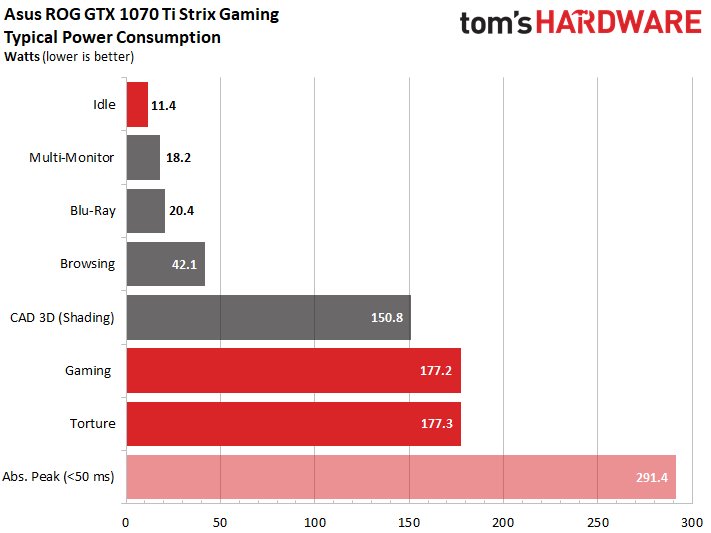
The corresponding voltages for both loops in the factory state are shown in the following diagram:
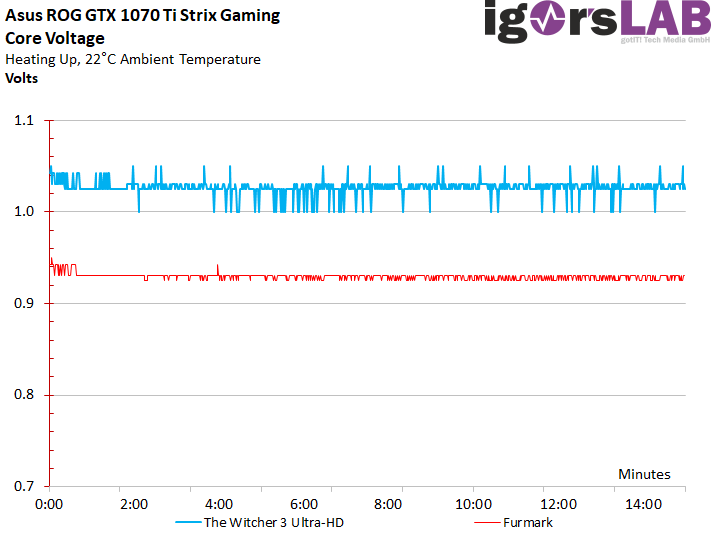
Compliance with the standard on the motherboard slot
With a maximum of 3.7 amps (torture), the card is still far below what the PCI SIG sets with a maximum of 5.5 amps (66 watts) for the 12-volt rail on the motherboard slot. In the Gaming Loop, the maximum overclocking is just below that of 3.1 amperes. Overall, therefore, balancing has been implemented in a truly exemplary manner.
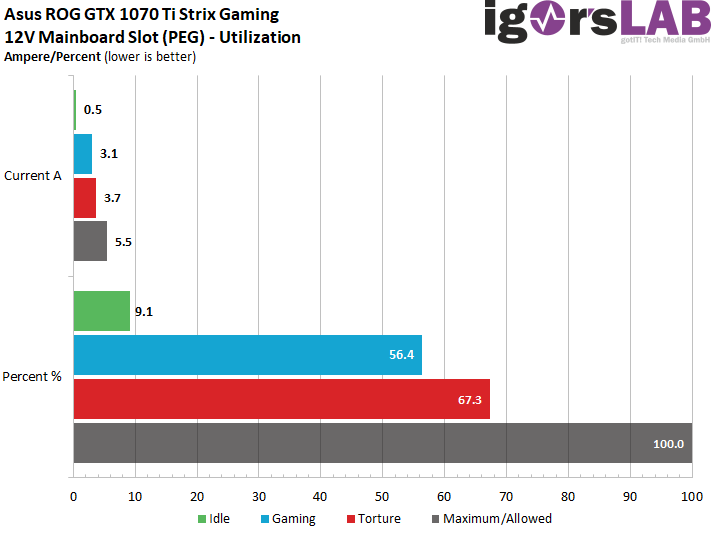
Detailed graphics: power consumption and currents
For better illustration, we have also recorded all measurement results as detailed curves in the graphs below.
Measured values in the idle
Measured Values in the Gaming Loop
Measured values in the Torture Loop



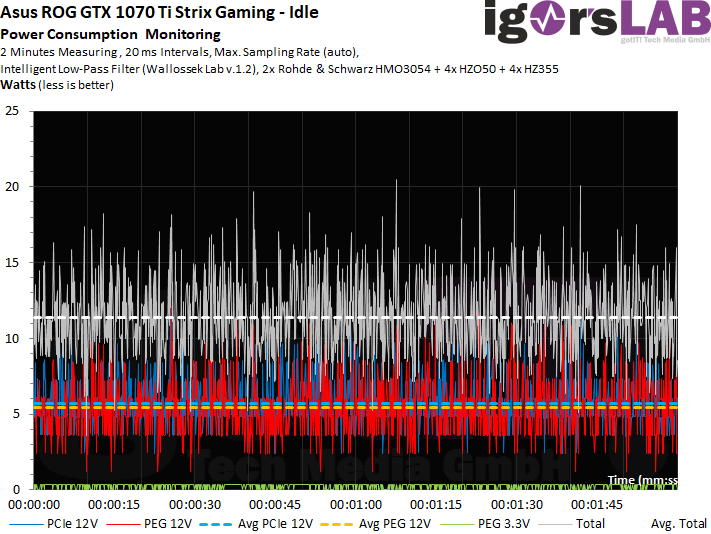
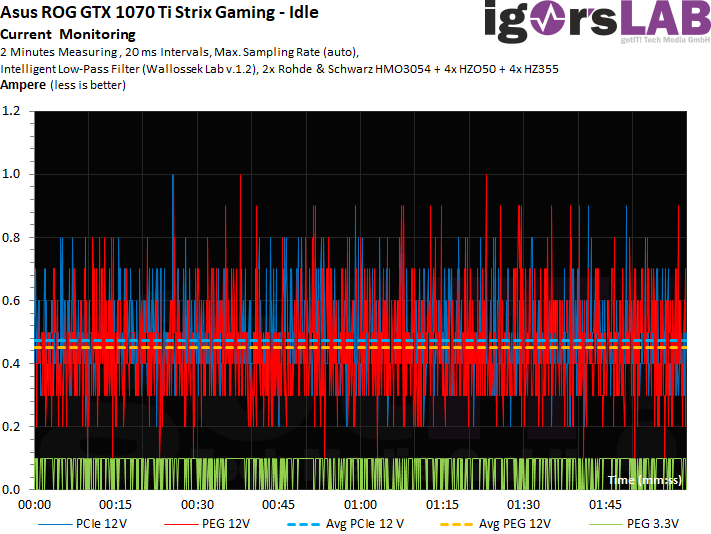
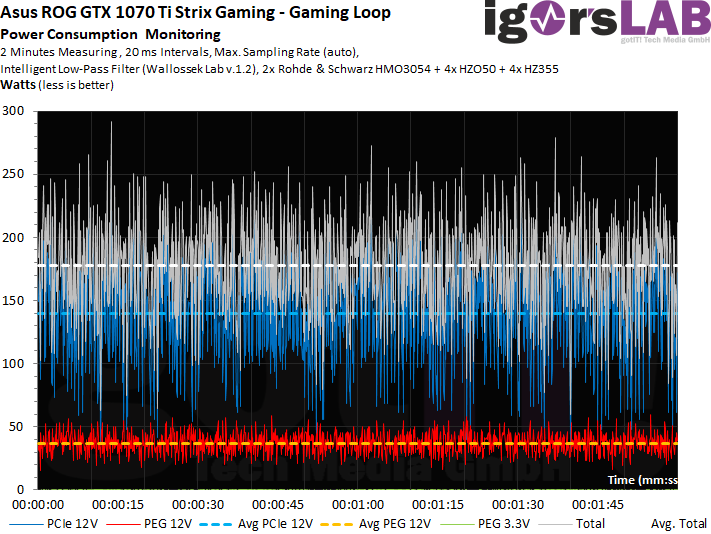
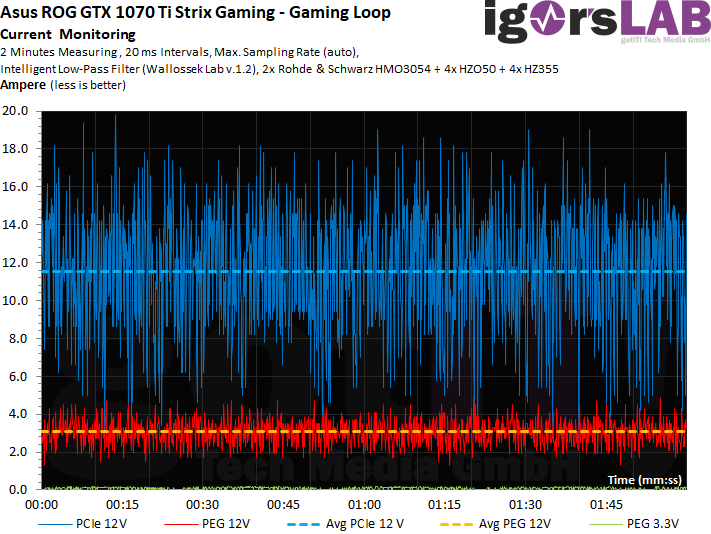
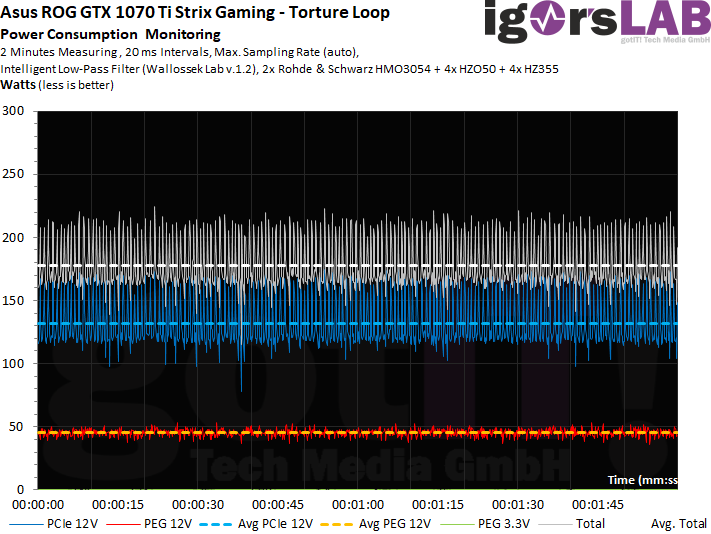
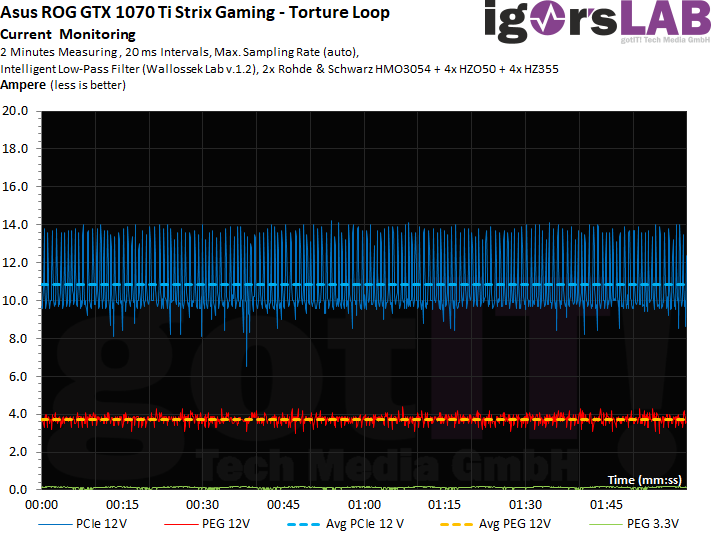


































Kommentieren